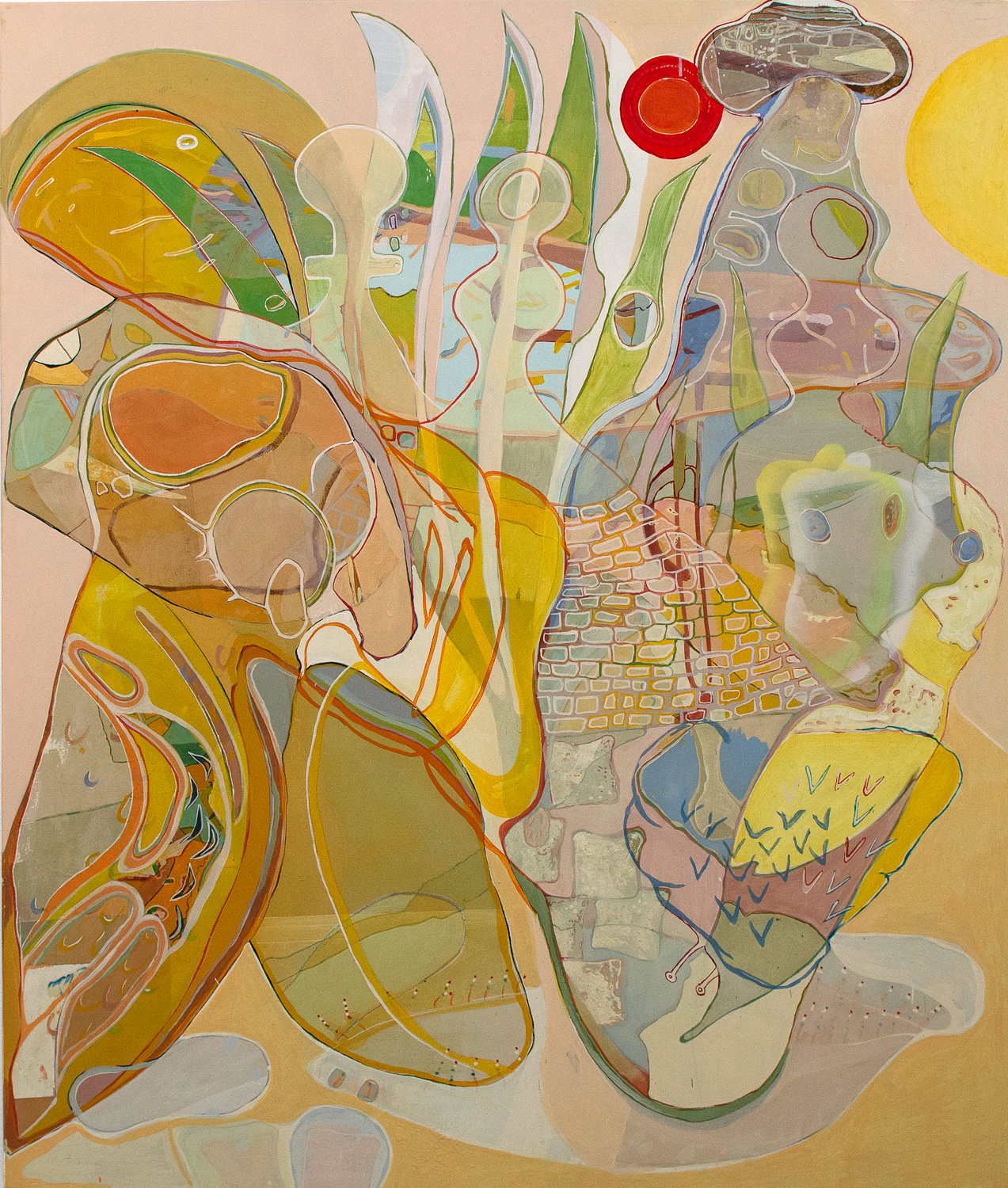Gian-Martino Cecere
(Germany, 1990)
One thousand four hundred kilometers is the distance that allows to pass from a geographical extreme to another one, keeping alive cultures and contradictions of places to stay. This research focuses on differences in logic, in which stress and elasticity, shape and substance, reality and artifice, stasis, and rhythm, resumption and interruption, chance and project, get in touch until they overlap, dissolving any border. The resulting collisions make these signs reveal, appearing from a few composition's details, but at the same time keeping clearly visible the process of making. Ancient art, ethnography, archetypes, animal and vegetable world are areas of interest from which work draws, recovering the constitutive symbols, only to be readjusted through liquid spelling, that expands itself until it leaks the wall, showing itself as a complex tissue of images in which figurative identity dissolves in perspective plans.
Pictorial scraps, cuttings, old materials, sketches, erasures, worn and dated materials, and grafts of other nature are stratagems that talk the same unknown language and the gesture insists on already marked paths. Things are left waiting for them to take on a meaningful intention.
The canvas, as a place of an archaeological find, looks like a schedule capable of revealing the ruins of a timeless civilization, on which it is possible to see erosions, strengths, focuses, and fractures, which tear the integrity of the overall vision. The space-temporal conditions of this discovery are blurred, as the objects of discovery, are often marked by an epic will: monuments, polymorphic figures, and mentioned landscapes. Showing the decomposition process is necessary to understand the distance between the work and the user.


